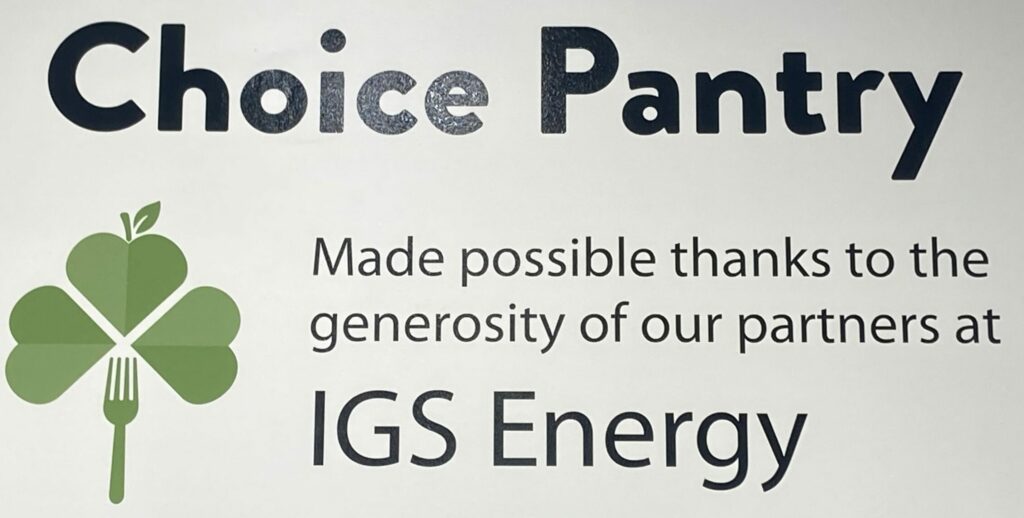
‘The work is getting harder.’ Over 90% of Columbus-area nonprofits report higher demand
More than 90% of Columbus-area nonprofits are seeing more people in need than they did one year ago, and 70% of them can’t meet that demand.
These “jarring” findings are from a Human Service Chamber of Franklin County state of the nonprofit sector study conducted earlier this month, shared by Michael Corey, executive director of the chamber.
Of 100 responses, 92% of Columbus-area nonprofits said they were experiencing higher demand than last year, Corey said, and 63% of them expect that they won’t be able to meet demand next year.
Corey spoke on a Columbus Metropolitan Club forum titled “Annual State of Nonprofits” on Wednesday, along with Courtney Falato, vice president and program officer for Global Philanthropy at JPMorgan Chase; Mario Basora, chief executive officer at Future Ready Columbus, an organization focused on children and change in the county; and Shannon Isom, president & CEO of the Community Shelter Board.
Dan Sharpe, vice president for Community Research and Grants Management at The Columbus Foundation, hosted the forum.
“The work is getting harder and it is requiring more and more heart,” Sharpe said.
Nonprofits’ finances, staffing and economic impact
Nonprofits are a major economic driver for the county and generate $2 billion in economic impact and employ more than 18,000 people, according to the Metropolitan Club.
“We have a good problem in Columbus with all the growth and all the development that’s happening,” Corey said during the forum.
Of those surveyed, 23.6% of nonprofits made $2 to $5 million in annual revenue, according to the Human Service Chamber.
“It’s enormous. It’s an economic driver, but the strains on this sector and the margins that the sector has to operate within are as thin as they’ve ever been,” he said of nonprofits. “In a lot of ways, this is the hardest moment of the pandemic, even though the pandemic is over, because of some of these colliding consequences.”
Pandemic resources are running out and inflation, demand, revenue challenges and the increasing cost of workers is impacting the sector, Corey said.
What are area officials saying? Can Columbus turn the tide of rising homelessness and food insecurity?
About 40% of the nonprofit organizations that responded said they think they will have a financial deficit at the end of their fiscal or calendar year, Corey said.
Nonprofits are also struggling with a lack of staff, with 1,075 unfilled positions across the responding agencies, Corey said. It’s hard to find qualified people and wages and benefits are an issue, he added.
But that number is better than last year, when 89 nonprofits reported almost 2,000 open positions, according to Corey.
Earlier this month, the Community Shelter Board and the Mid-Ohio Food Collective both reported increased need.
There has been a 20% increase in homelessness since last year, and food banks are seeing an unprecedented need for food assistance, with more than 680,000 visits in the first half of this year, reports from earlier this month show.
Local gaps
Isom, who has been in the community for about six months and was hired to figure out a solution to homelessness locally, was asked about what her observations of central Ohio were during her interview process and the reality of what they are now.
Isom first complimented Columbus, saying her observations were what people would want outsiders to see and know: there was organization, commitment, preparation for challenges and intellectual acumen about the issues, she said.
But there’s more to be done, she added.
“We’re highly transactional and we have to do more heart work,” Isom said. “We don’t talk enough about nonprofits ultimately being and sitting in the gap.”
Nonprofits are the mirror of what other structures think are ugly or too hard to fix, she said.
She noted gaps in the system locally and, at the end of the forum, made a call to action.
Nonprofits have to do more advocacy and push for legislation through collective voice and anger, she said.
“I remember when we used to be angry all the time,” Isom said. “What we have forgotten, though, is our power of voice.”
dking@dispatch.com



